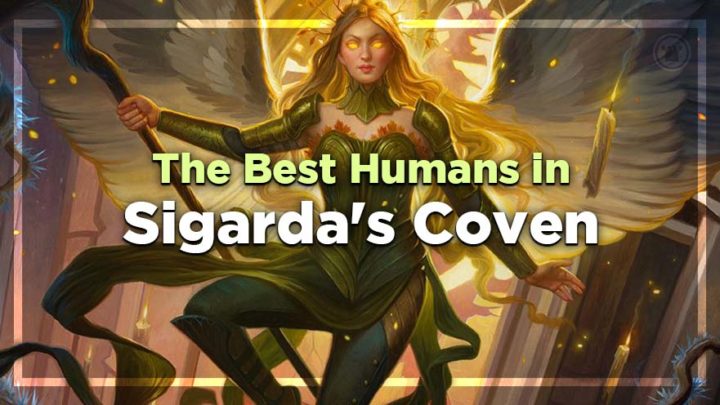Sigarda, Champion of Light is the newest incarnation of the much-loved Innistrad Angel. As the only remaining of the original Archangel sisters on the plane, Sigarda champions those under the duress of the Werewolves and other dark creatures of the night. Let’s look at her for Commander.
Sigarda, Champion of Light
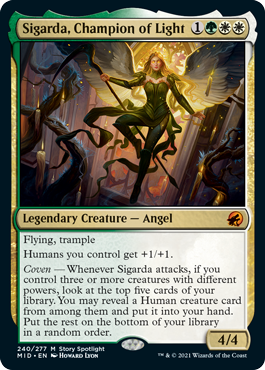
Sigarda, Champion of Light is the latest in a line of more aggressively costed Angels. At four mana, you get a lot for your buck. A 4/4 flying trample body is already pretty good, but when you add on a lord effect for Humans, and the potential to add Humans to your hand? I’m in.
If we look at the odds of drawing into one or more Humans when Sigarda triggers, you’d need around 22 Humans in the deck. Using a hypergeometric calculator, we can observe that:
- With a sample size of five, and a population of 99 cards, with 22 being Humans, we would have:
72.4% chance to draw 1 or more of the wanted card
41.6% chance to draw exactly 1 of the wanted card
27.6% chance to draw 0 of the wanted card - Our result of 72.4% might go up to around 75% once we’ve drawn our opening hand and first card of the game, but that math is a little off. Consider the average route instead.
- If we cast Sigarda on turn four, and attack on turn five, we have at minimum drawn our opening hand of seven cards, plus one for each turn. If we assume that we’ve drawn two Humans by this point (a conservative estimate, perhaps), then we’re at 73.4% if we have 22 Humans in our deck.
For this reason, I don’t feel like you should go below 20 Humans in your Sigarda deck, and if anything, I’d want to be looking at closer to 25, if at all possible. This is even more crucial the more tutors you add to the deck; if we’re adding cards like Recruiter of the Guard or Captain Sisay, we could be reducing our chances to hit with Sigarda. On the other hand, if we also play tutors that thin out the deck, like Cultivate, it can help to balance things back the other way. These slight alterations don’t account for much, and can also just not matter — if we draw all of one kind of tutor, we’re only affecting the math in one direction, and if we run enough card draw, Sigarda’s draw power becomes less relevant.
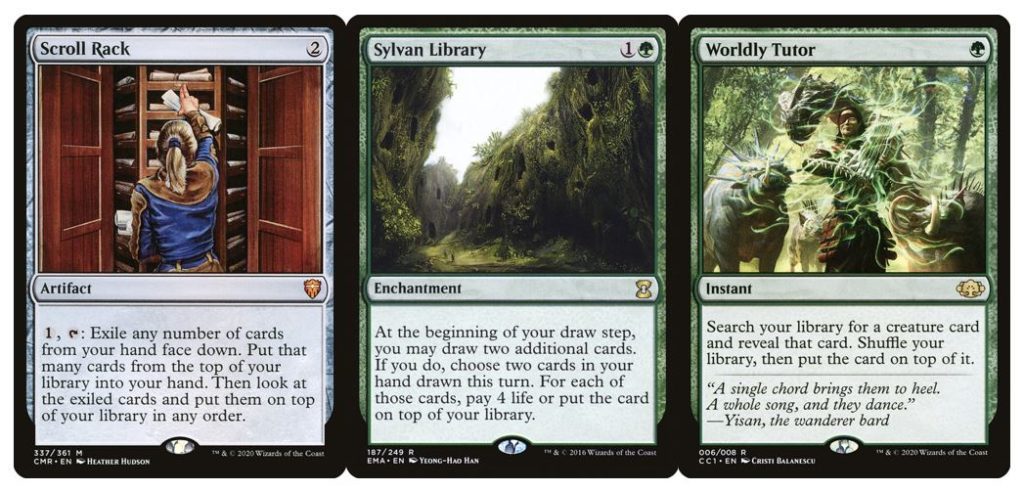
We can mitigate our misses by adding in ways to manipulate our top deck, so be sure to consider those.
Sigarda’s Ideal Deck
The ideal deck to have Sigarda lead is a deck comprised of Humans, sure. But more than that, the deck should have a good number of hatebears. Humans are a strong tribe, but they excel when they can play three, four, or even five colors, where they have access to all of their strongest effects. In a two-color combination like Selesnya or Boros, the ideal way to play is to jam hatebears.
Unlike Winota, Sigarda can’t run as many non-Human hatebears, as they won’t benefit from her anthem effect. Furthermore, she won’t be able to achieve a win nearly as quick as Winota — they’re simply different kinds of decks.
Instead, Sigarda is a slow burn. The aim is to drop hatebears and other value creatures early and slow down your opponents. Once you have accumulated a wide board, you can then use an overrun effect to swing out for lethal damage. Sigarda’s strengths lie in pervasiveness and board control, as opposed to all-out aggro.
Triggering Coven
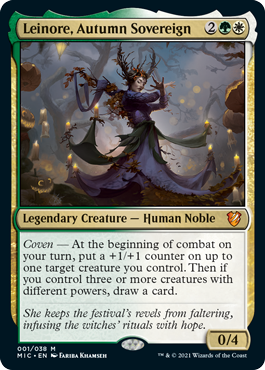
Coven is a new mechanic from Midnight Hunt. Provided we control creatures with three different powers (literally “power” as in “power/toughness,” not different abilities), we can get a bonus effect. This is how we draw cards with Sigarda, and something we need to bake into our build. Leinore, Autumn Sovereign is the face commander of the GW deck this time around, and is a great inclusion in our build. She gives us card draw and +1/+1 counters, but more than that, a creature with 0 power.
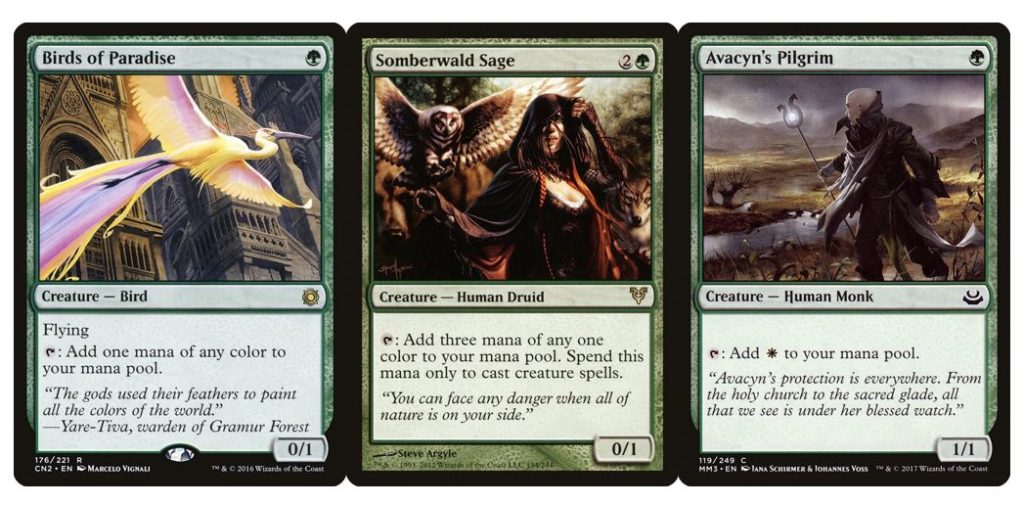
Because Sigarda has four power, she indirectly nerfs any three-power Humans in our deck; they’ll become power four, and consequently not contribute to Sigarda’s coven ability. As such, it’s paramount we include any strong zero-power creatures we can muster, as it’ll help us achieve coven more often. Mana dorks like Birds of Paradise and Somberwald Sage are perfect, as is Avacyn’s Pilgrim, as a useful Human one-drop.
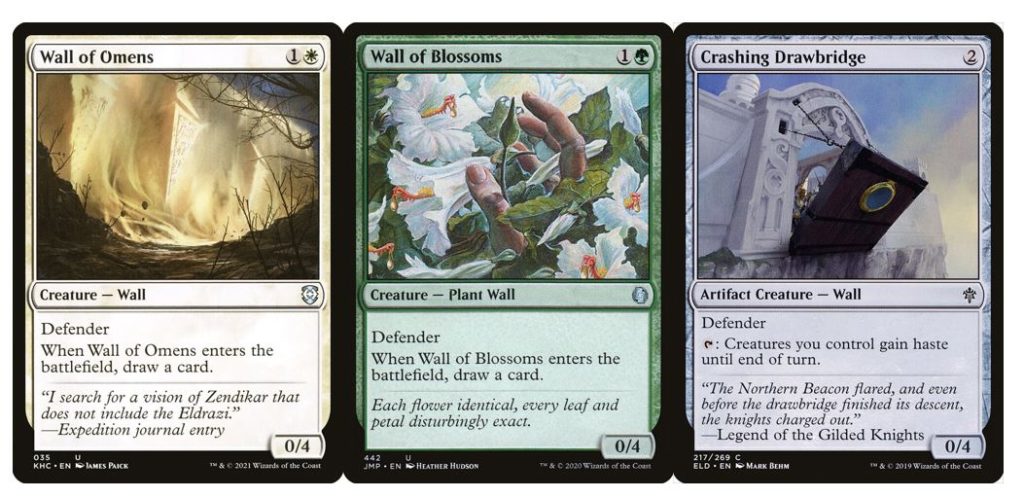
Walls can be useful here, particularly the ones that draw cards if we have access to some blink synergies. Crashing Drawbridge is perhaps more relevant, as it will give us team-wide haste.
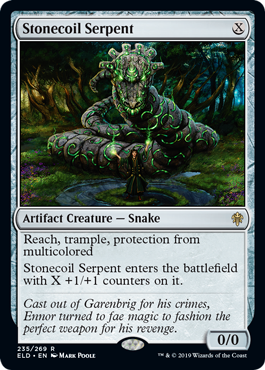
Stonecoil Serpent is also worth a shout. Any creature with variable casting cost and power is worth trying, but Stonecoil is probably the most flexible and most powerful option we have. If we end up using cards like Odric, Lunarch Marshal and Akroma, Vision of Ixidor to swing out with, the keywords come in handy.
The Best Humans to Run in Sigarda
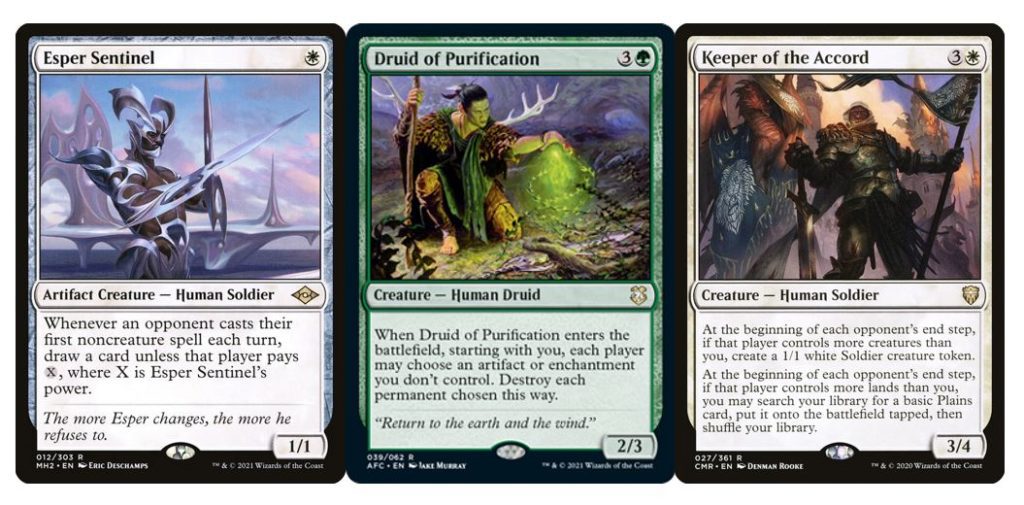
It’s been a cracking year for green and white Humans, and we kick things off with some of the more powerful roleplayers in the deck. Esper Sentinel gets bumped to two power by Sigarda, super useful for drawing cards. Druid of Purification is an incredible piece of removal, and Keeper of the Accord can thin our deck to help Sigarda trigger more often.
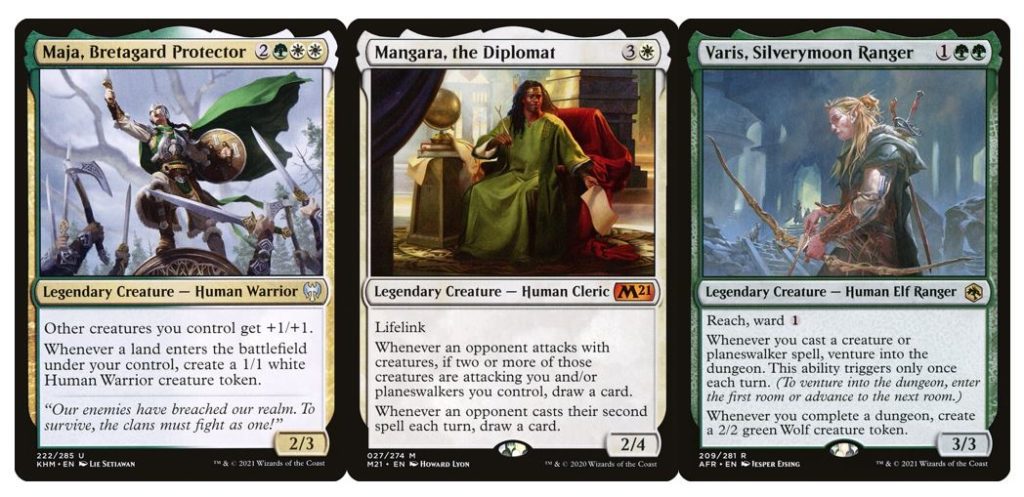
There’s plenty of options when it comes to recent cards. Maja pumps and grows the team; Mangara helps us draw more cards; Varis is a surprisingly great option to help with manipulating the top deck, given there’s a lot of scry available in dungeons.
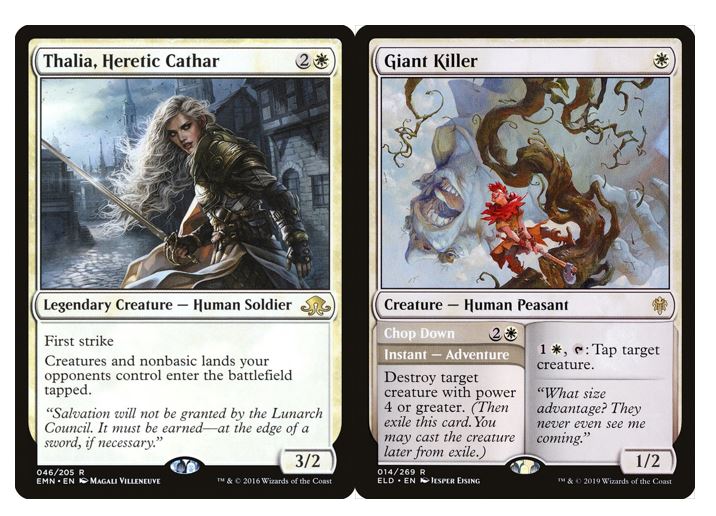
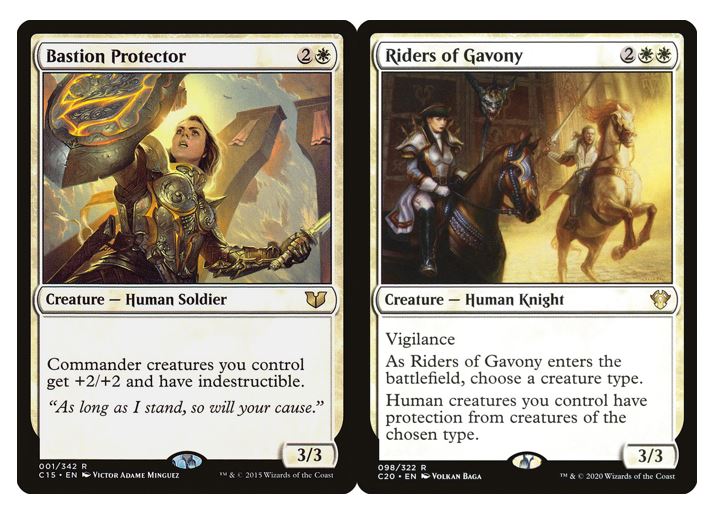
There are dozens of Humans to choose from, and aside from the ones that I’ll cover in later sections, there are a few remaining shoutouts. Thalia is a house in EDH, and can help slow things down so you can get set up. Giant Killer is a removal spell you can draw into with Sigarda. Bastion Protector keeps Sigarda alive, and Riders of Gavony can make your team unblockable in many scenarios.
The Best Non-Humans for Sigarda
While you’ll have plenty of slots for Humans in Sigarda, your slots for non-Humans are rarely going to be more than 8-10. Though there are a wealth of great cards to slot in here — especially hatebears, like Gaddock Teeg, Yasharn, and Aven Mindcensor — I’m going to concentrate on the ones that best synergize with what we’re trying to do.
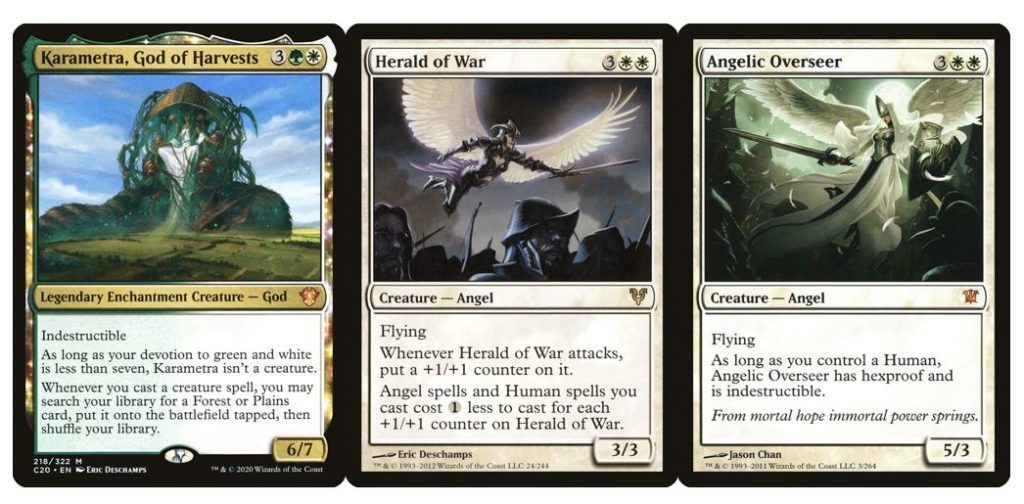
First up, if we’re a creatures deck, Karametra is a shoe-in. She ramps and thins the deck for Sigarda triggers. Secondly, Herald of War is a way to help us flood the board in the lead-up to a strong attack. Angels synergize well with Humans, and Herald can reduce Sigarda’s tax, if nothing else. Angelic Overseer is a card I have a soft spot for, and with the likes of Odric, it can help buff your team.
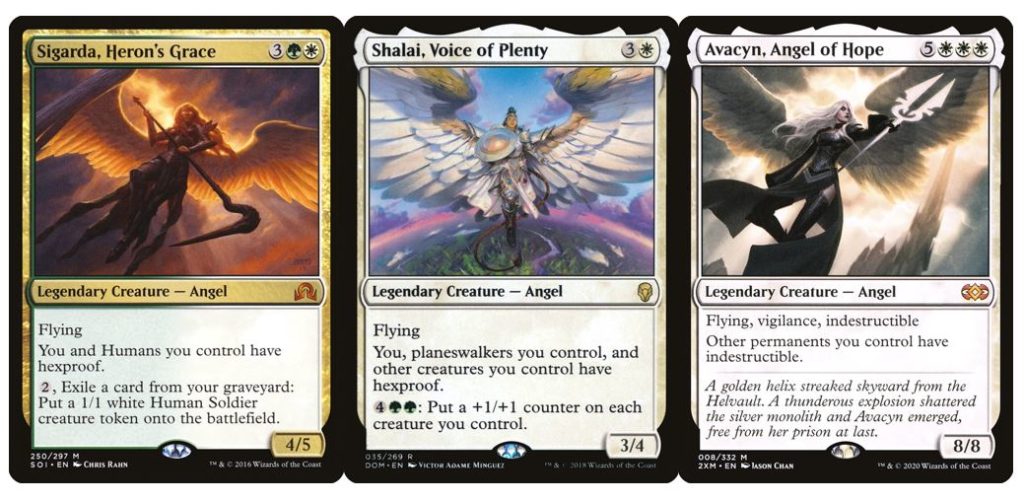
Protection is also useful. The Shadows over Innistrad Sigarda is incredibly good at protecting us, and so are both Shalai, Voice of Plenty and the original Avacyn. The latter two also help us attack, which is super helpful.
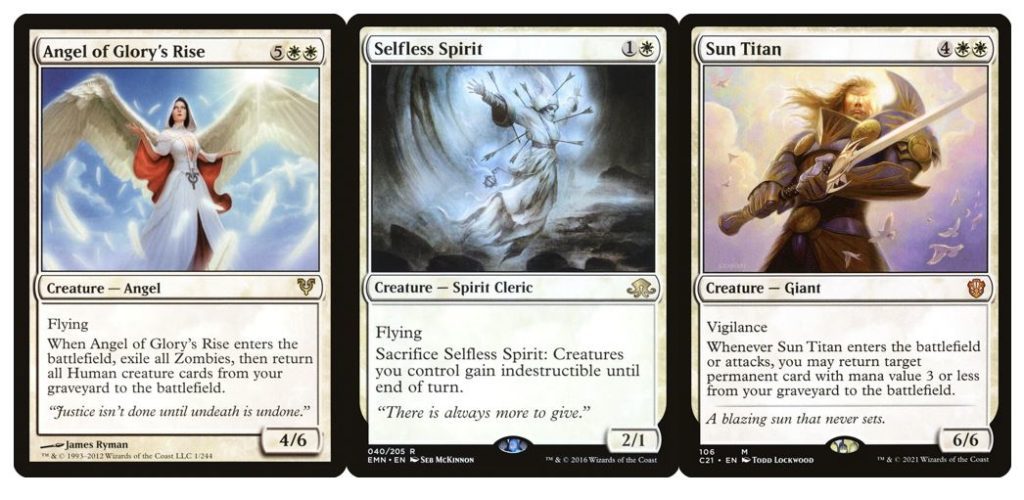
Recursion is also key, so having ways to get our board back is a no-brainer — and we definitely don’t want to be feeding the Zombies. Angel of Glory’s Rise is a nice niche pick, while Selfless Spirit and Sun Titan are staples in white creature-based decks. This deck definitely wants Eternal Witness over Timeless Witness if you have Sun Titan.
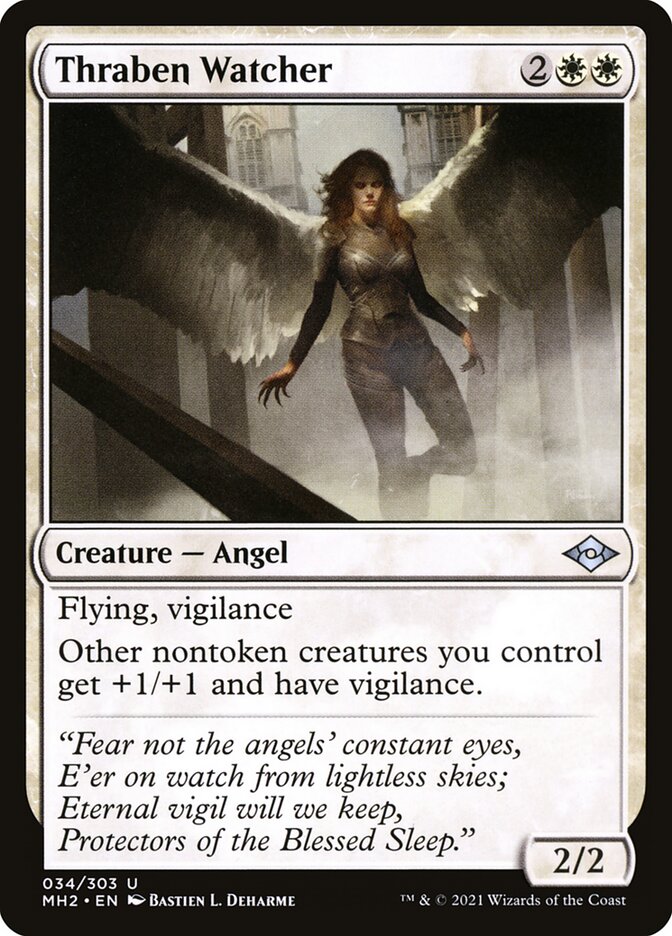
If I had to call out one budget superstar for the deck, it’d be Thraben Watcher. It’s an Always Watching on a body, and it’s almost always available as a lower-power creature to trigger coven.
Winning the Game
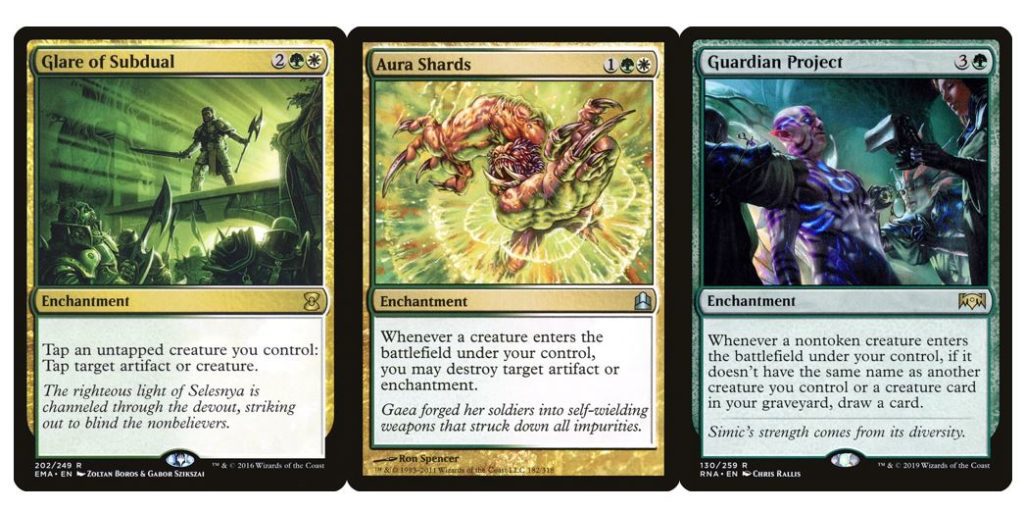
Getting to the end-game involves grinding it out, that’s for sure. I’d recommend running the powerful creature synergies available in Selesnya like Glare of Subdual, an excellent underplayed card.
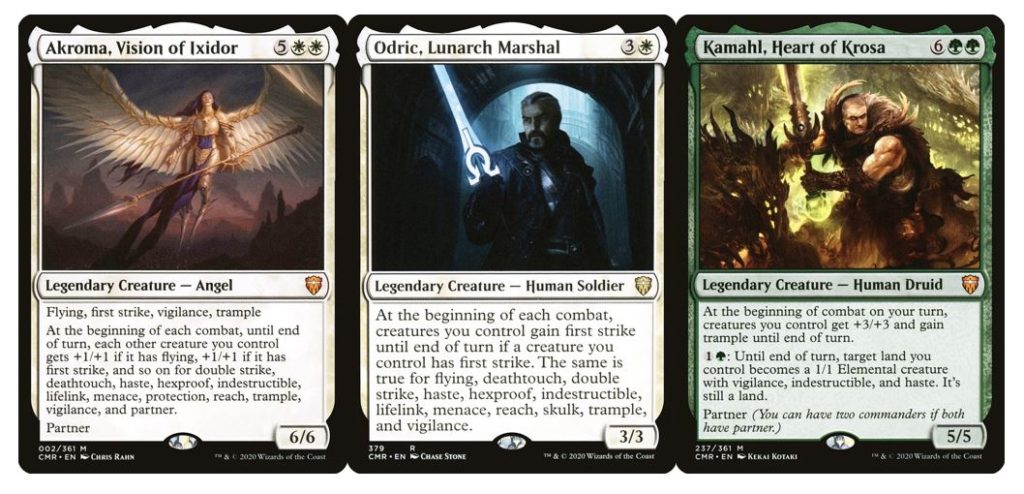
As for ending the game, there’s a couple ways to do it. If we’ve gone down the hatebear route — which I believe is optimal — then a combination of ways to all-out attack and buff our creatures is optimal. Between Akroma, Odric and Kamahl, we should be well-placed to achieve victory. There’s also the traditional Craterhoof Behemoth, of course, but it’s fun to try different things, too.
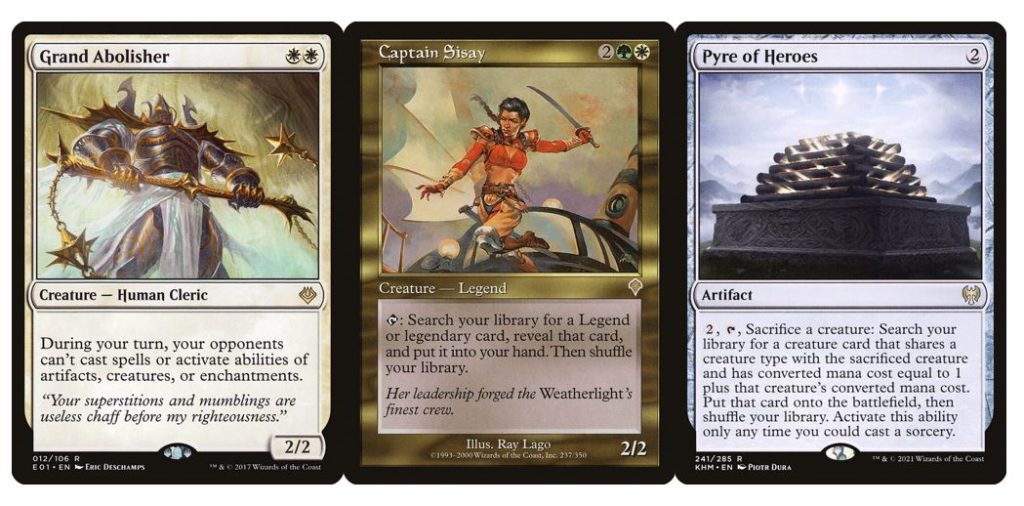
Either way, pack a Grand Abolisher to prevent interaction when you want to go off, and consider the plentiful tutors in GW that can help you access your toolbox and your win conditions.
Deck Building Sub-themes
Thanks to being in GW, Sigarda has access to some great sub-themes.
Enchantress
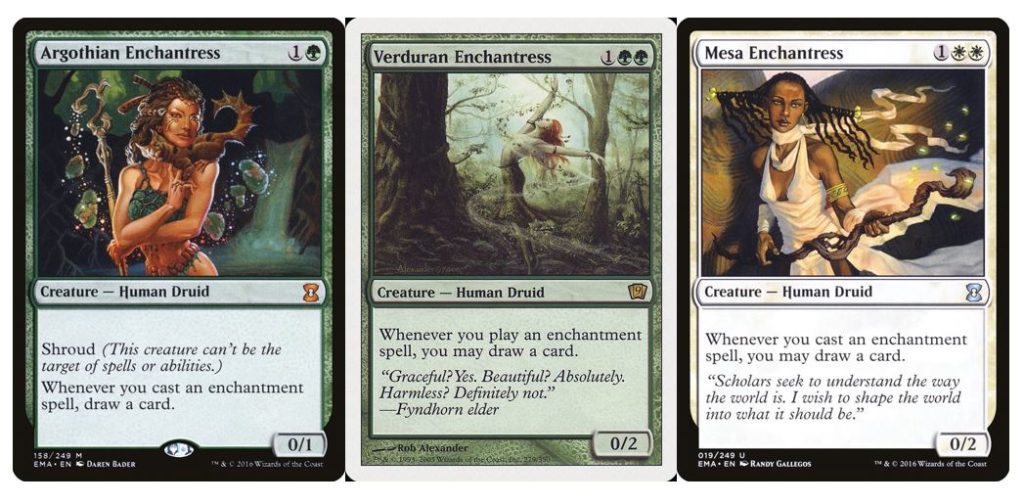
The first theme is Enchantress. The main card draw options it gives us are all zero power, which is neat, and we have reasons to try Archetype of Courage and Destiny Spinner. We can mix a little Voltron into our Human tribal with cards like Sigil of the Nayan Gods, and we could even try the Siona + Shielded by Faith combo.
Lifelink/Counters
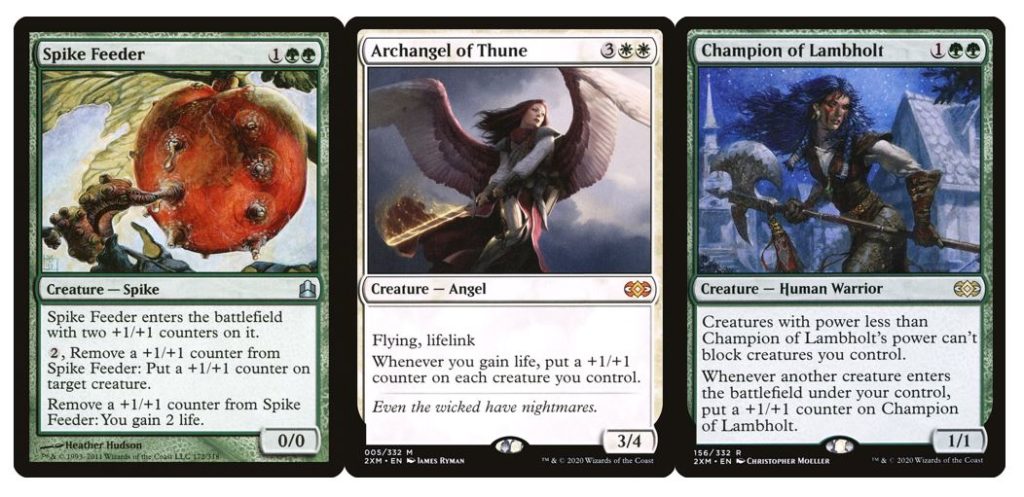
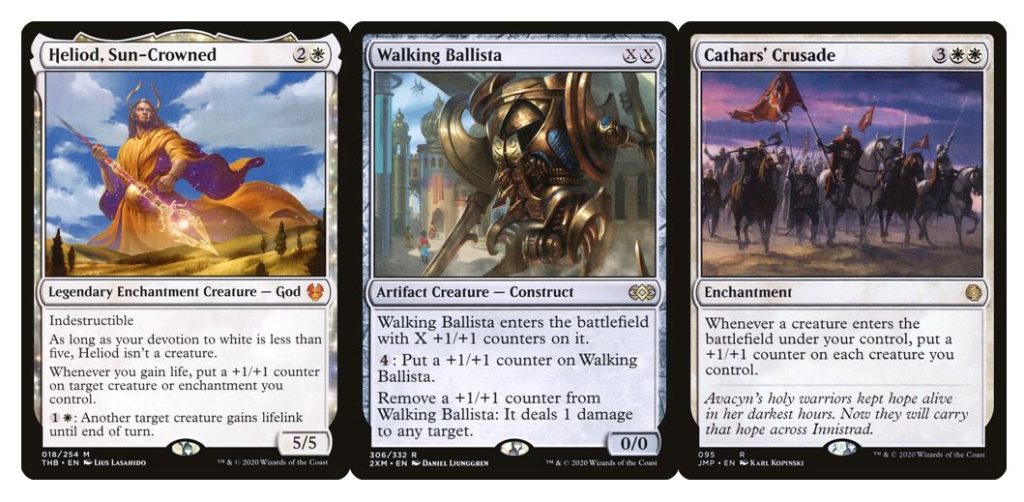
I lumped in lifelink and +1/+1 counters together here, as they kinda go hand in hand these days. Counters are great for enabling coven, particularly if we can choose where to place them. Humans also have a lot of counter synergies, with the outlast creatures that grant flying or trample both being available in GW. This theme also unlocks the Heliod/Walking Ballista combo.
Blink
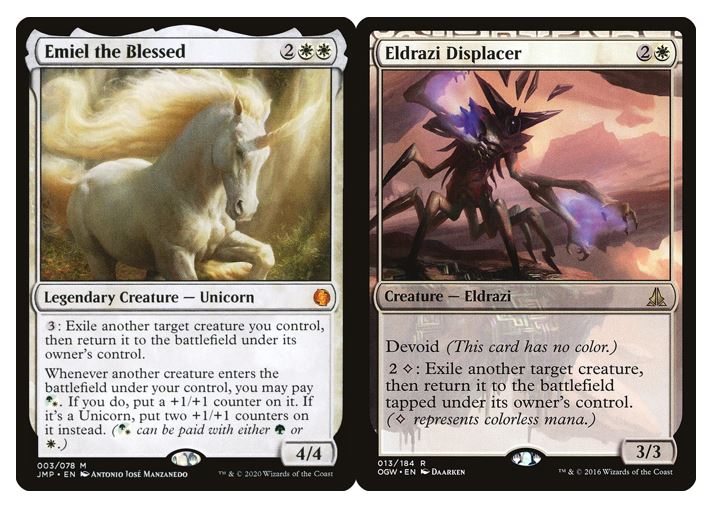
Finally, blink is a good way to make use of the more powerful creatures available in this color combination — or just as a way to protect them. Emiel can help you to reuse ETB effects while adding counters to help trigger coven.
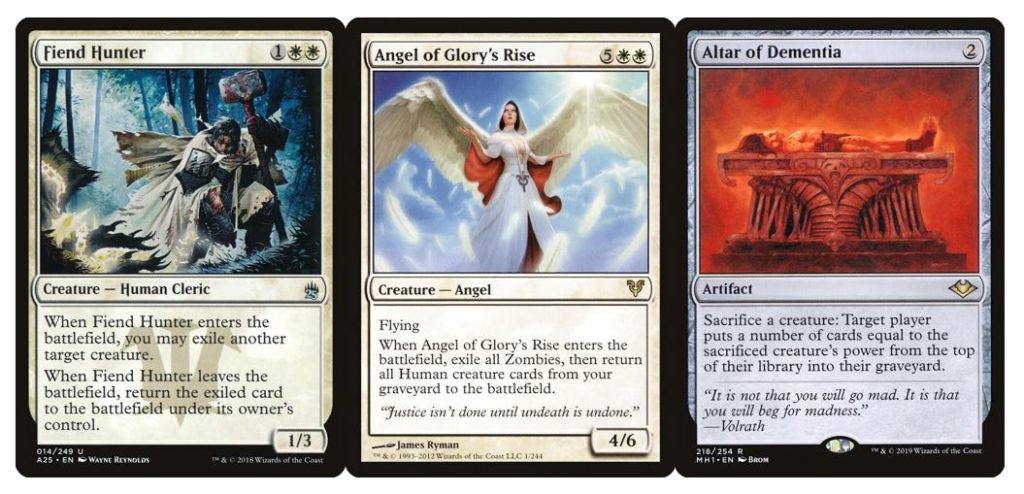
We can then also use Angel of Glory’s Rise to its full potential alongside the readily blinkable Fiend Hunter. With an Altar of Dementia, you can then mill everyone out.
***
Sigarda, Champion of Light is far from the strongest Angel, but for her cost, she packs a serious punch. You’ll struggle to get more out of an Angel at this mana cost. She’s sure to excel leading Human tribal lists, and can easily helm a deck that wants to indulge any of the popular Selesnya subthemes. Digging for Humans can enable any of the sub-strategies listed above, and I’m excited to see where people go with building her. Let me know what sweet synergies you’ve unearthed on Twitter.

Kristen is Card Kingdom’s Head Writer and a member of the Commander Format Panel. Formerly a competitive Pokémon TCG grinder, she has been playing Magic since Shadows Over Innistrad, which in her opinion, was a great set to start with. When she’s not taking names with Equipment and Aggro strategies in Commander, she loves to play any form of Limited.

